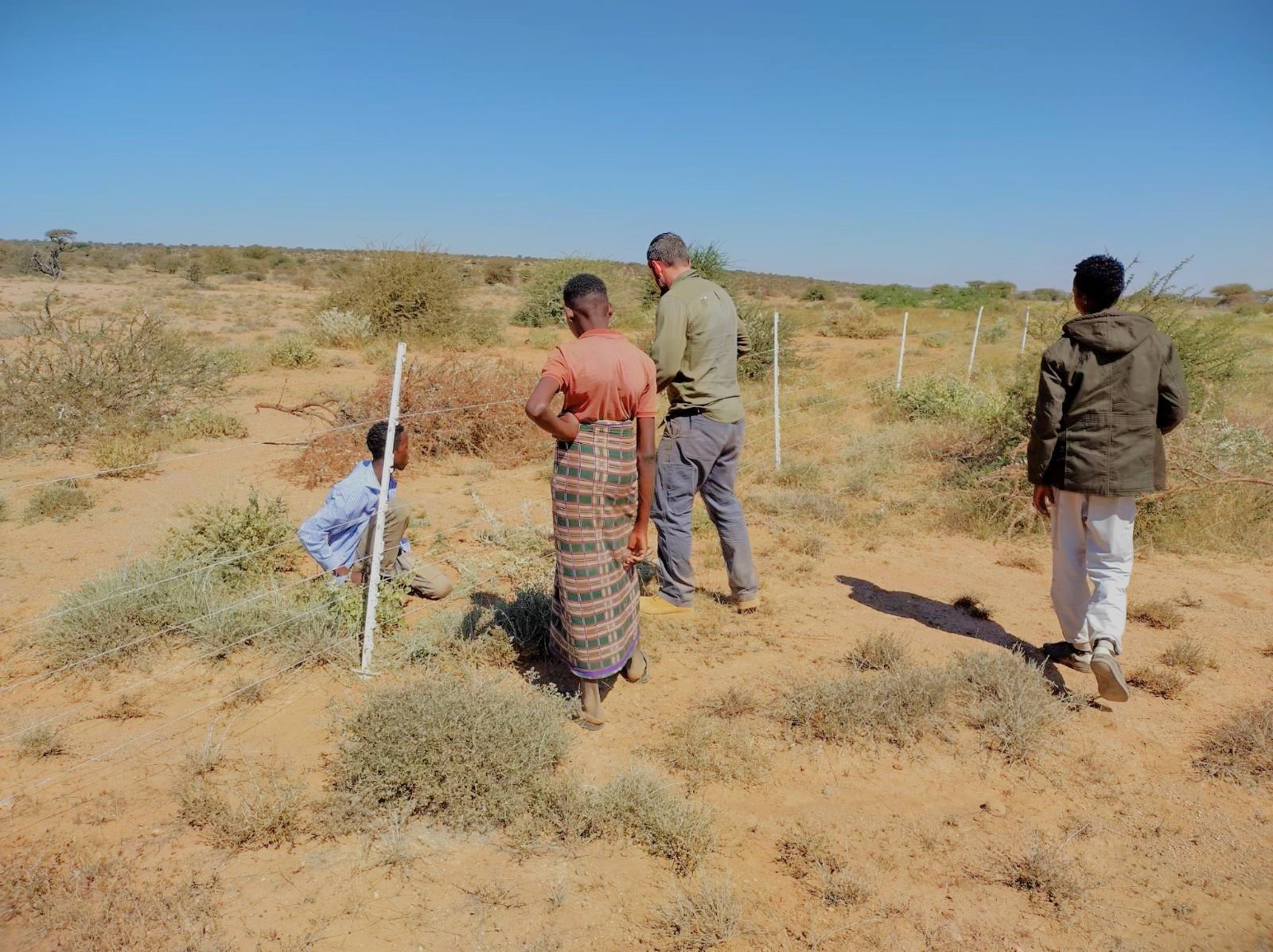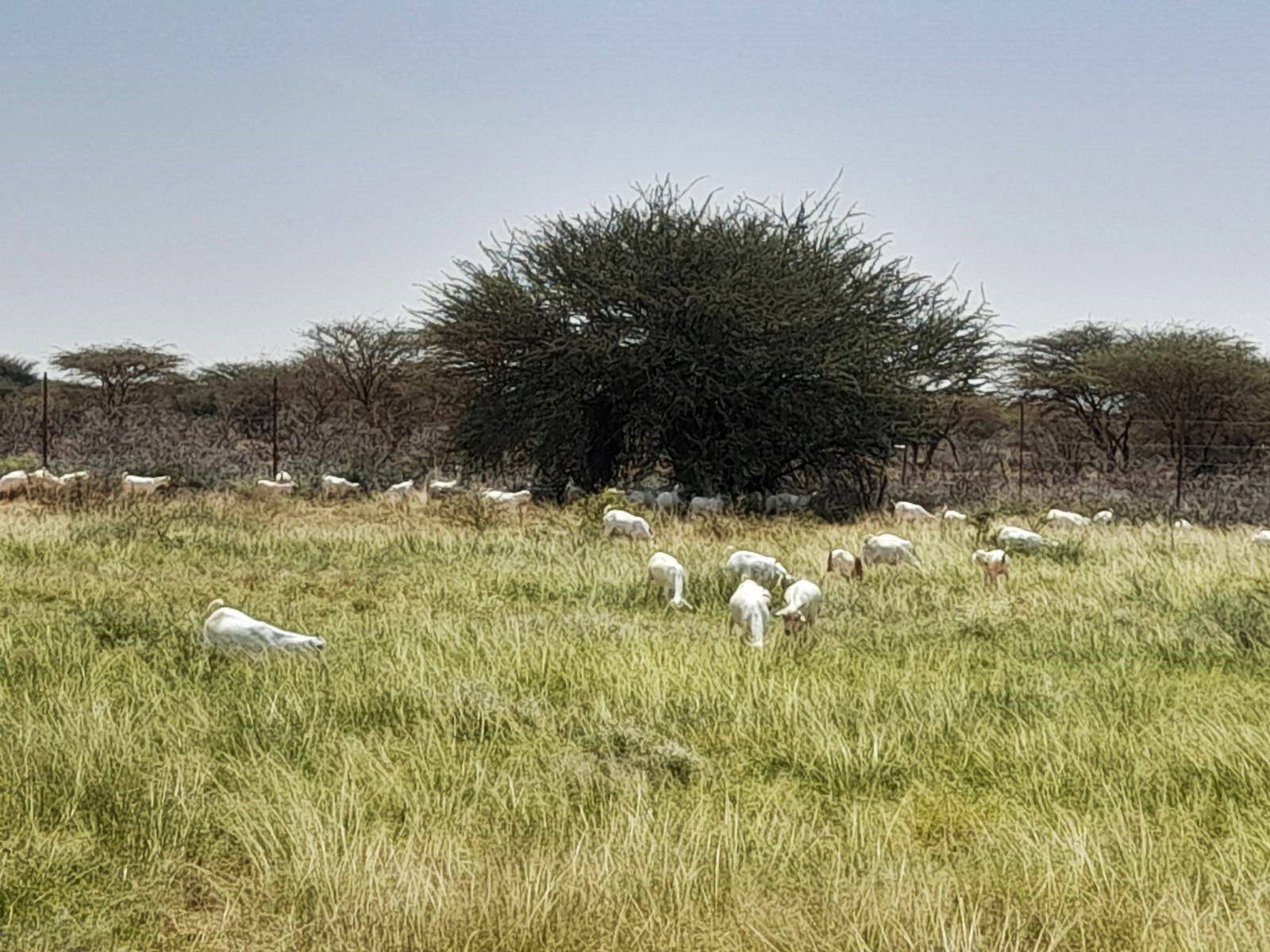Regenerative Grazing
The local guys we hired as shepherds had plenty of experience tending to livestock, but none of them had used a solar-powered electric fence to move animals from one grazing area one day to another the next – nor did they have an understanding of why one would do so.
Somalis have historically grazed their livestock in certain areas during the wet season, taken their livestock to other places for dry season grazing, and then returned to the wet season grazing areas after the rains return. This meant the land was intensively grazed at certain times of the year and allowed to rest and recover at other times of the year. However, due to modern realities, more and more land has livestock grazing on it 365 days out of the year. This causes an increase in both overgrazing and overrest, both of which are detrimental to the land.
Drawing on the historical example of Somalis and looking at the grazing patterns of the wild herds we see in Creation has allowed us to help our local shepherds understand (1) the importance of allowing the grass to recover before grazing it again, (2) the necessity of planning for and beyond the dry season, and (3) the advantages of increased stock density.
1. Allowing the Grass to Recover
After grass is grazed, it uses the energy stored in its roots to begin regrowing. This means the roots shrink in size, but they will eventually be replenished by energy from photosynthesis as the grass grows – unless they aren’t!
If grass is grazed a second time before it’s able to recover, this forces it to pull more energy from the roots. This is known as overgrazing, and it can be devastating to the roots and the entire plant.
That’s why we plan our grazing moves and determine the stocking rate for the land based on the amount of time our grasses need for recovery.
2. Planning For and Beyond the Dry Season
As the dry season begins, the grasses stop growing. The rains are not expected to fall again for many months, and the grasses on our land are now at a fixed amount. By determining, on average, how many square meters of land could feed one animal for a day (yes, there are equations for that, haha!), we can determine how many “animal days” of grazing we have on the whole of our land for that dry season. An animal day is the amount of grass one “standard” animal needs for one day (for us, a “standard animal” = 1 cow or four goats/sheep).
After calculating the number of animal days of grass we have for the dry season, we divide it by the number of days until the next rain (plus an additional 30 days to be safe). The answer to this little math problem tells us how many animals we can feed each day with the grass we have and not run out until 30 days after we expect rain.
If this number is smaller than the number of livestock we currently have, then we need to destock and sell animals until the numbers we have match the numbers we can feed through and beyond the dry season.
We learned this a bit the hard way last year. As we had just bought all our livestock and didn’t want to just turn around and resell them and since the numbers were somewhat close, we took a chance and hoped the rains wouldn’t come 30 days late. We also slightly overestimated how many animal days of grass we had. Needless to say, our land and animals suffered for it. Lesson learned!
3. Increased Stock Density
By increasing the number of grazing paddocks on the land, we decrease their size, thereby increasing the density of our animals. When this happens, plants are grazed more evenly (as animals can be less choosy about which plants to graze), urine and dung are distributed more evenly, and the hard surface on the top of the soil is better broken up by the hooves of the animals. All of this helps the land to improve more quickly.
Increasing the number of paddocks also means quicker moves for the animals to fresh, unfouled pasture. Not only does this provide better nutrition for the animals, but it also makes them happy, which is beneficial for their health and well-being.
Much of our time over the last few months has been building systems and a team that facilitates these three things: hiring and firing, teaching and equipping, and trial and error. We’ve honed our skills at moving fences and animals, fine-tuned job responsibilities, and navigated team dynamics. We've dealt with wolves, warthogs, baboons, and tortoises, retrofitted fence posts designed for the soil to work in rock, sorted countless logistics, and learned countless more lessons.
While many things are still being sorted out, we’re grateful that our farm is operational and has found its groove. We’ve sold our first goats and sheep, welcomed our first lambs and (goat) kids, and are setting ourselves up to begin producing our first farm products! More on that soon. 😊





